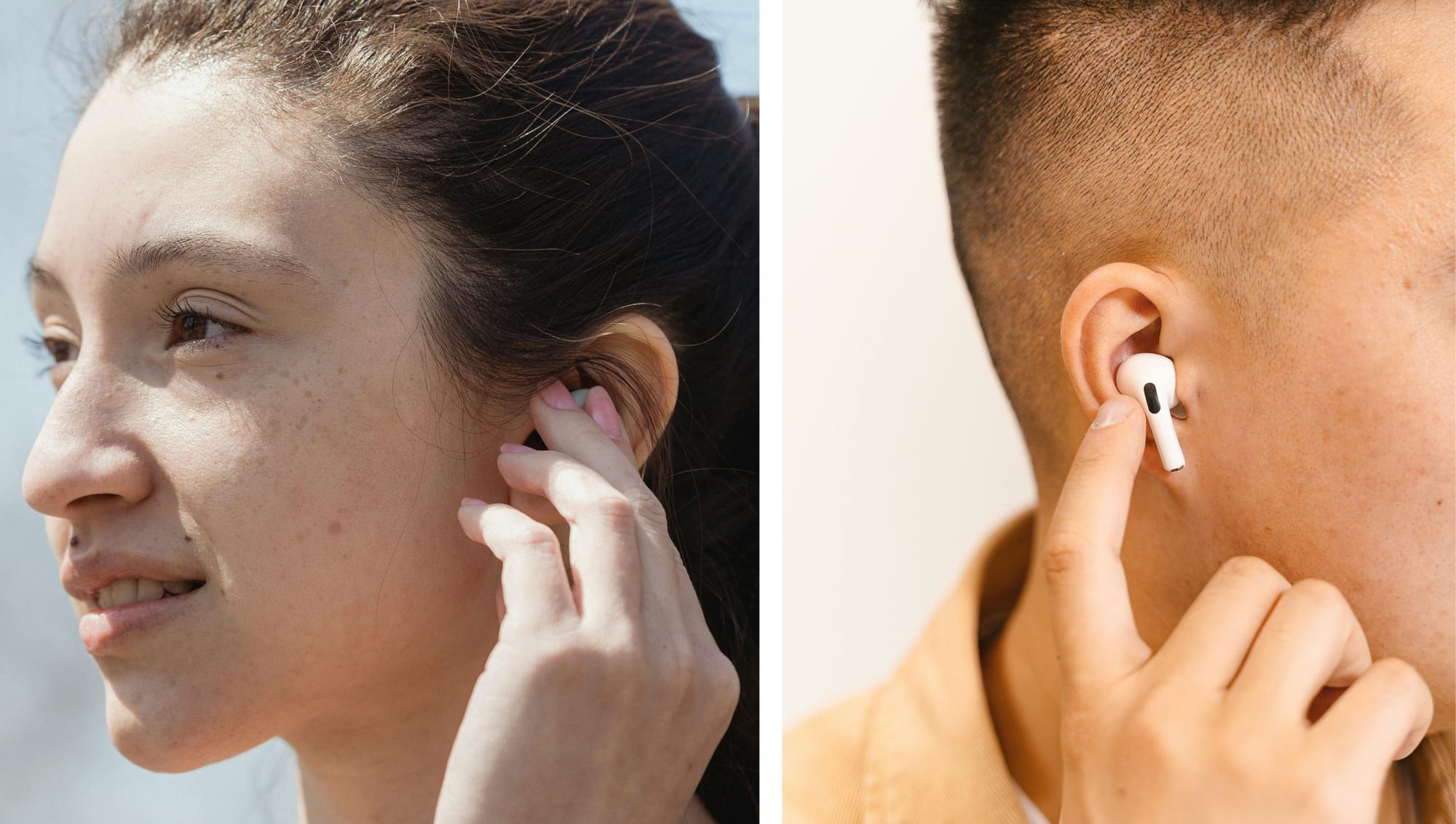Are Open-Ear Earbuds Suitable for Individuals with Hearing Impairments?
Open-ear earbuds can be a great option for those with hearing impairments, allowing better awareness of ambient sounds while enjoying audio.

- Open-ear earbuds offer a unique listening experience that can benefit those with hearing impairments.
- They provide ambient sound awareness, which is crucial for safety and communication.
- Understanding the technology and features of open-ear earbuds can help in making an informed decision.
Introduction to Open-Ear Earbuds
Open-ear earbuds have been making waves in the audio industry, offering a fresh perspective on how we experience sound. Unlike traditional earbuds that sit inside the ear canal, open-ear designs rest outside the ear, allowing ambient sounds to mix with the audio. This feature can be particularly beneficial for individuals with hearing impairments, as it provides a balance between listening to music or calls and staying aware of the surrounding environment.
The concept of open-ear technology is not entirely new, but its application in earbuds has opened up a world of possibilities. For those with hearing impairments, the ability to hear both the audio from the earbuds and the sounds around them can enhance their daily interactions and safety. This article delves into the benefits and considerations of using open-ear earbuds for individuals with hearing impairments.
Understanding Hearing Impairments
Hearing impairments can vary significantly from person to person, ranging from mild hearing loss to profound deafness. Each level of impairment presents its own set of challenges and requires different solutions. For some, traditional earbuds may not provide the clarity or volume needed, while for others, they might block out essential environmental sounds.
Open-ear earbuds offer a potential solution by allowing users to hear their surroundings while still enjoying audio content. This dual capability can be particularly advantageous for those who rely on lip-reading or other visual cues, as it enables them to remain engaged with their environment. Understanding the specific needs of individuals with hearing impairments is crucial in determining whether open-ear earbuds are a suitable option.
The Technology Behind Open-Ear Earbuds
Open-ear earbuds utilize bone conduction technology or air conduction to deliver sound. Bone conduction transmits sound vibrations through the bones of the skull directly to the inner ear, bypassing the eardrum. This method can be beneficial for individuals with certain types of hearing impairments, as it allows them to perceive sound without relying on the eardrum.
Air conduction, on the other hand, uses small speakers positioned near the ear to deliver sound. This method allows ambient sounds to mix with the audio, providing a more natural listening experience. Both technologies have their advantages and can be suitable for different types of hearing impairments, depending on the individual's needs and preferences.
Benefits of Open-Ear Earbuds for Hearing Impairments
One of the primary benefits of open-ear earbuds for individuals with hearing impairments is the ability to maintain situational awareness. This feature is particularly important for safety, as it allows users to hear approaching vehicles, alarms, or other critical sounds while listening to music or taking calls.
Additionally, open-ear earbuds can enhance communication by allowing users to hear conversations more clearly. This can be especially beneficial in social settings or work environments where being able to hear both the audio from the earbuds and the surrounding sounds is essential. The combination of these features makes open-ear earbuds a versatile option for those with hearing impairments.
Challenges and Considerations
While open-ear earbuds offer several benefits, there are also challenges and considerations to keep in mind. One potential drawback is sound leakage, which can occur when audio from the earbuds is audible to others nearby. This can be a concern in quiet environments or when privacy is important.
Another consideration is the fit and comfort of open-ear earbuds. Since they do not sit inside the ear canal, they may feel different from traditional earbuds. It's important for users to try different models and find one that fits comfortably and securely. Additionally, individuals with severe hearing impairments may find that open-ear earbuds do not provide the volume or clarity they need.
Comparing Open-Ear and Traditional Earbuds
When comparing open-ear earbuds to traditional models, it's essential to consider the specific needs of individuals with hearing impairments. Traditional earbuds can provide a more immersive audio experience by blocking out external sounds, which may be beneficial for some users. However, this feature can also be a disadvantage for those who need to remain aware of their surroundings.
Open-ear earbuds, on the other hand, offer a more balanced listening experience by allowing ambient sounds to mix with the audio. This can be particularly advantageous for individuals with hearing impairments who need to hear both the audio content and the sounds around them. Ultimately, the choice between open-ear and traditional earbuds will depend on the user's preferences and specific hearing needs.
Case Study: Real-Life Experiences
To better understand the impact of open-ear earbuds on individuals with hearing impairments, let's explore a real-life case study. Sarah, a 35-year-old with moderate hearing loss, struggled with traditional earbuds as they blocked out essential environmental sounds. After switching to open-ear earbuds, she found that she could enjoy her favorite music while still being aware of her surroundings.
Sarah's experience highlights the potential benefits of open-ear earbuds for those with hearing impairments. By allowing her to hear both the audio content and the ambient sounds, she was able to feel more connected to her environment and improve her overall listening experience.
Choosing the Right Open-Ear Earbuds
Selecting the right open-ear earbuds involves considering several factors, including sound quality, comfort, and compatibility with hearing aids. It's important for individuals with hearing impairments to try different models and find one that meets their specific needs.
Sound quality is a crucial consideration, as it can vary significantly between different models. Users should look for earbuds that provide clear and balanced audio, allowing them to enjoy music and conversations without distortion. Comfort is also essential, as open-ear earbuds should fit securely without causing discomfort during extended use.
Compatibility with Hearing Aids
For individuals who use hearing aids, compatibility with open-ear earbuds is an important consideration. Some models are designed to work seamlessly with hearing aids, allowing users to enjoy audio content without interference. It's essential to check the specifications of the earbuds and consult with an audiologist to ensure compatibility.
In some cases, open-ear earbuds can be used in conjunction with hearing aids to enhance the listening experience. This combination can provide a more comprehensive audio solution, allowing users to hear both the amplified sounds from their hearing aids and the audio from the earbuds.
Safety Considerations
Safety is a critical factor when choosing earbuds, especially for individuals with hearing impairments. Open-ear earbuds can enhance safety by allowing users to hear important environmental sounds, such as traffic or alarms. This feature is particularly beneficial for those who need to remain aware of their surroundings while listening to audio content.
However, it's important to use open-ear earbuds responsibly and avoid listening at high volumes, which can cause further hearing damage. Users should also be mindful of their surroundings and avoid using earbuds in situations where full attention is required, such as crossing busy streets.
The Future of Open-Ear Technology
The future of open-ear technology looks promising, with ongoing advancements aimed at improving sound quality and user experience. As technology continues to evolve, we can expect to see more innovative features and designs that cater to the needs of individuals with hearing impairments.
Manufacturers are increasingly focusing on creating earbuds that offer a seamless blend of audio content and ambient sounds, providing a more natural listening experience. These advancements have the potential to make open-ear earbuds an even more attractive option for those with hearing impairments.
Practical Tips for Using Open-Ear Earbuds
For individuals considering open-ear earbuds, there are several practical tips to keep in mind. First, it's important to try different models and find one that fits comfortably and securely. This ensures that the earbuds stay in place during use and provide the best possible sound quality.
Additionally, users should experiment with different volume levels to find a balance between hearing the audio content and remaining aware of their surroundings. It's also advisable to consult with an audiologist or hearing specialist to ensure that the chosen earbuds meet their specific hearing needs.
Common Misconceptions
There are several misconceptions about open-ear earbuds that can influence purchasing decisions. One common myth is that open-ear earbuds cannot provide high-quality sound. While it's true that sound quality can vary between models, many open-ear earbuds offer excellent audio performance, making them a viable option for music lovers.
Another misconception is that open-ear earbuds are only suitable for individuals with hearing impairments. In reality, these earbuds can benefit anyone who wants to enjoy audio content while remaining aware of their surroundings. This makes them a versatile choice for a wide range of users.
Summary
Open-ear earbuds offer a unique listening experience that can be particularly beneficial for individuals with hearing impairments. While there are challenges and considerations to keep in mind, the benefits of open-ear technology make it a promising option for those seeking an alternative to traditional earbuds.
These earbuds let you enjoy audio while staying aware of your surroundings, creating a balanced and natural listening experience. When you're ready, click the button below to explore the open-ear earbuds we've selected to suit your needs and lifestyle.

